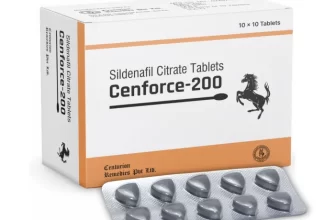Generic Viagra’s absence stems primarily from Pfizer’s patent protection, which lasted until 2017 in the US. This exclusive manufacturing right prevented other companies from producing and selling chemically equivalent versions of sildenafil citrate, Viagra’s active ingredient.
However, patent expiration doesn’t automatically equate to immediate generic availability. Manufacturing generic drugs requires rigorous testing and FDA approval to confirm bioequivalence – proving they work the same way as the branded drug. This process, often lengthy and costly, explains the delay in generic Viagra’s widespread appearance.
Furthermore, several companies now offer sildenafil citrate under different brand names. These are not technically “generic Viagra,” but they provide the same active ingredient at lower prices than Pfizer’s branded product. You can find various options based on price and availability.
Finally, consider consulting your physician. They can advise you on appropriate treatment for erectile dysfunction, possibly including sildenafil citrate or alternative medications, ensuring you receive safe and effective care tailored to your specific needs. Don’t self-medicate; professional guidance is key.
- Why No Generic Viagra?
- Patent Expiration and Generic Availability
- Brand Name vs. Generic
- Finding Generic Sildenafil
- Patent Protection and the Pharmaceutical Industry
- The Cost of Drug Development
- Generic Competition and the Patent Cliff
- Generic Drug Benefits
- The Balance: Innovation vs. Access
- The Complexity of Viagra’s Chemical Formula and Manufacturing Process
- Synthesis Challenges
- Manufacturing Process Control
- The Bottom Line
- Legal Battles and Extended Patent Life
- The Impact of Brand Recognition and Market Dominance
Why No Generic Viagra?
Pfizer’s patent protection on Viagra expired in various countries at different times. This allows other companies to produce and sell generic versions of sildenafil citrate, Viagra’s active ingredient. However, the brand name Viagra itself remains under patent protection in some regions.
Patent Expiration and Generic Availability
Generic sildenafil is widely available in many countries where Pfizer’s patent has expired. The cost is significantly lower than branded Viagra. Check your country’s regulations concerning generic drug availability. Pharmacies often stock generic sildenafil. Your doctor can prescribe either the brand-name drug or the generic alternative.
Brand Name vs. Generic
Generic sildenafil contains the same active ingredient and provides the same therapeutic effect as Viagra. However, inactive ingredients might slightly differ, potentially causing minor variations in how quickly the medication works or side effects experienced. Both are regulated to ensure safety and efficacy.
Finding Generic Sildenafil
Online pharmacies offer generic sildenafil, but always exercise caution. Only use reputable online pharmacies with valid licenses and verified customer reviews. Consult your doctor before purchasing any medication online. Always prioritize your health and safety.
Patent Protection and the Pharmaceutical Industry
Patent protection grants pharmaceutical companies exclusive rights to manufacture and sell a drug for a specific period, typically 20 years from the date of application. This incentivizes substantial investment in research and development. Without this protection, companies might be less inclined to fund costly clinical trials and the complex process of bringing new medications to market.
The Cost of Drug Development
Developing a new drug involves immense expenditure. Estimates for bringing a single drug to market range from $2.6 billion to over $10 billion. This includes pre-clinical research, clinical trials (Phase 1, 2, and 3), regulatory submissions, and manufacturing. Patent protection allows companies to recoup these substantial investments through sales.
Generic Competition and the Patent Cliff
Once a drug’s patent expires, generic manufacturers can legally produce and sell bioequivalent versions. This immediately introduces competition, significantly lowering prices. This “patent cliff” can impact a company’s profitability dramatically. The timing of patent expiration therefore significantly influences market dynamics and the availability of affordable medications.
Generic Drug Benefits
Generic drugs offer a cost-effective alternative to brand-name medications, thereby increasing patient access to necessary treatments. The rigorous approval process ensures generic drugs meet the same high standards of quality, safety, and efficacy as their brand-name counterparts. Generic competition drives down healthcare costs considerably.
The Balance: Innovation vs. Access
The pharmaceutical industry navigates a complex equilibrium. Strong patent protection encourages innovation, ultimately leading to new and improved therapies. However, it also contributes to higher drug prices until patent expiration. Finding an optimal balance that supports both pharmaceutical innovation and patient access to affordable medicines remains a central challenge.
The Complexity of Viagra’s Chemical Formula and Manufacturing Process
Producing generic Viagra, or sildenafil citrate, presents significant challenges beyond simply replicating the chemical formula. The molecule itself, while seemingly straightforward, demands precise synthesis.
Synthesis Challenges
- Multi-step synthesis: Sildenafil’s creation requires a complex series of chemical reactions, each needing carefully controlled temperatures, pressures, and reaction times. A slight deviation can yield impurities or significantly reduced potency.
- Purity standards: Pharmaceutical regulations mandate incredibly high purity levels, far exceeding those needed for many other chemicals. Removing all byproducts and impurities requires sophisticated purification techniques.
- Isomer control: Sildenafil exists as several isomers (different spatial arrangements of atoms), only one of which is pharmacologically active. Manufacturing must ensure a high yield of the correct isomer while minimizing the formation of inactive or potentially harmful ones.
These hurdles impact the cost of manufacturing considerably. Furthermore, the necessary equipment and expertise are not readily available to all manufacturers.
Manufacturing Process Control
- Raw materials sourcing: The quality and purity of starting materials heavily influence the final product’s quality. Sourcing reliable, high-grade precursors is critical.
- Process validation: Extensive testing is needed at every stage to verify that the process consistently produces high-quality sildenafil citrate that meets stringent purity, potency, and safety standards.
- Quality control: Rigorous quality control procedures are essential throughout the entire manufacturing process. This includes regular testing of raw materials, intermediate compounds, and the final product for purity, potency, and the presence of potential contaminants.
- Regulatory compliance: Generic drug manufacturers must navigate a complex regulatory landscape, demonstrating bioequivalence (similar absorption and bioavailability) to the original brand-name drug. This involves extensive clinical trials and regulatory submissions.
The Bottom Line
The intricate chemical formula and stringent manufacturing requirements for sildenafil citrate necessitate significant investment in specialized equipment, highly trained personnel, and rigorous quality control measures. These factors significantly influence the time and cost involved in producing a generic version, contributing to the relatively limited availability of truly generic Viagra.
Legal Battles and Extended Patent Life
Pfizer, Viagra’s original manufacturer, aggressively defended its patent, triggering numerous legal challenges from generic drug companies seeking to enter the market. These battles frequently involved complex arguments about patent validity and scope, delaying generic entry. For example, Pfizer successfully extended Viagra’s patent life through various means, including supplementary patent applications covering new formulations or uses.
Data Protection Certificates also played a crucial role. These certificates, granted in many countries, offer an additional period of exclusivity after a drug’s initial patent expires, protecting the originator from generic competition. This exclusivity period, often lasting several years, further delayed the arrival of generic Viagra.
Strategic litigation, including appeals and counter-suits, significantly increased the time required for generic manufacturers to secure approvals and launch their products. The cost and length of these legal battles created a high barrier to entry for smaller companies.
Ultimately, the combined effect of patent extensions and legal maneuvering resulted in a prolonged period of market exclusivity for Pfizer, significantly delaying the availability of generic Viagra. This highlights the significant impact of intellectual property rights on drug pricing and access.
The Impact of Brand Recognition and Market Dominance
Pfizer’s Viagra enjoys unparalleled brand recognition, built over decades. This strong brand identity directly translates to consumer trust and preference. Many patients, even those aware of generic options, specifically request Viagra by name, driving sales and limiting generic penetration.
Pfizer’s market dominance stems from more than just brand recognition; it involves extensive marketing, robust patent protection (historically), and a first-mover advantage. This established market share creates a significant barrier to entry for generic competitors. Successfully challenging such a powerful brand requires substantial investment and a proven marketing strategy.
Studies show a consistent correlation between brand recognition and price premiums. Patients often perceive branded drugs as higher quality, regardless of whether this perception is scientifically accurate. This perception allows Pfizer to maintain higher prices for Viagra, undercutting the cost advantage generics typically offer.
The sheer volume of Viagra prescriptions further consolidates Pfizer’s position. This high volume enables cost efficiencies in production and distribution that are difficult for smaller generic manufacturers to match.
Therefore, the combination of potent brand recognition and established market dominance effectively limits generic Viagra’s market share. Overcoming this requires a multi-faceted approach focusing on competitive pricing, targeted marketing emphasizing equivalence, and a clear communication strategy highlighting the clinical efficacy of generic alternatives.





